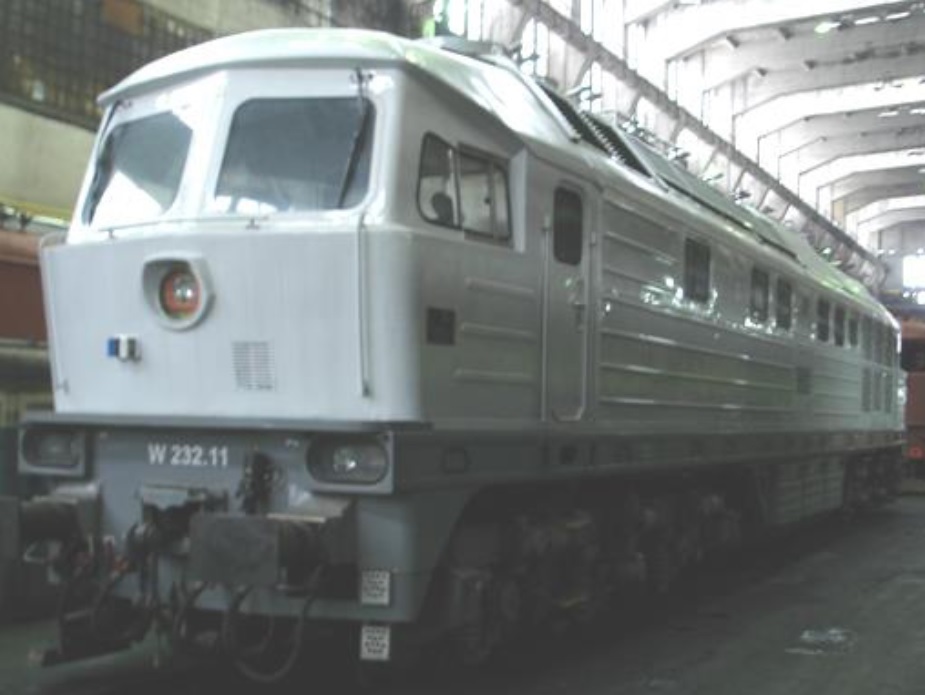Current issue
Online first
Archive
About the Journal
Aims and scope
Publisher and Editorial
Advertising policy
For Authors
Paper review procedures
Procedures protecting authentic authorship of papers
Paper preparation manual
Plagiarism check
Publication ethics
Reviewers
APC
Editorial and Scientific Board
Contact
Reviewers
Determination of the resistance to motion of a cargo train when driving without a drive
1
Faculty of Civil and Transport Engineering, Institute of Transport, Poznan University of Technology, Poland
2
Faculty of Civil and Transport Engineering, Institute of Transport, Poland
3
Faculty of Civil and Transport Engineering, Doctoral School of Poznan University of Technology, Poland, Poland
These authors had equal contribution to this work
Submission date: 2023-08-09
Final revision date: 2024-02-03
Acceptance date: 2024-02-13
Online publication date: 2024-03-02
Publication date: 2024-05-18
Corresponding author
Wojciech Sawczuk
Faculty of Civil and Transport Engineering, Institute of Transport, Poznan University of Technology, Poland
Faculty of Civil and Transport Engineering, Institute of Transport, Poznan University of Technology, Poland
Combustion Engines 2024,197(2), 64-70
KEYWORDS
TOPICS
ABSTRACT
The issue related to the motion resistance of a rail vehicle is very important for energy, environmental and related energy consumption of the vehicle as well as vehicle performance with dynamic points. The latter aspect applies in particular to traction vehicles. The article presents several models of resistance to movement of a freight train used by various railway authorities, for Polish and foreign rolling stock. The resistance values obtained from the models were verified against the tested freight train carrying aggregate. On the basis of the records from the locomotive recorder, linear models of speed changes over time and coasting paths (without drive) were determined. On the basis of the values obtained from the models of resistance to movement of a freight train, the paths of coasting to stop the train were determined on the basis of the UIC 544-1 card, which were related to the analyzed freight train.
REFERENCES (24)
1.
Anuszczyk J, Gocek A, Pacholski K, Dominikowski B. Modeling the train braking curve and analyzing the accuracy and quality of the automatic stop process. Buses Operation and Tests. 2016;12:768-774 (in Polish).
2.
Biliński J, Błażejewski M, Malczewska M, Szczepiórkowska M. Motion resistance of traction vehicles (1). TTS Research. 2019;3:34-39 (in Polish).
3.
Biliński J, Błażejewski M, Malczewska M, Szczepiórkowska M. Traffic resistance of passenger and freight trains (2). TTS Exploitation. 2019;5:39-44 (in Polish).
4.
Biliński J, Błażejewski M, Malczewska M, Szczepiórkowska M. Traffic resistance of metro trains (5). TTS Exploitation. 2020;3-4:58-59 (in Polish).
6.
Domek M. Vehicle motion resistance and minimization of rolling resistance. Drives and Controls. 2017;12:96-100 (in Polish).
7.
Garczarek A, Woźnika K, Olejniczak T, Waśkowicz R, Stachowiak D. Determination of the reactance of rail vehicles wheelsets. Rail Vehicles/Pojazdy Szynowe 2023;1-2;32-38. https://doi.org/10.53502/RAIL-....
8.
Gąsowski W. Analysis of formulas for calculating train motion resistance. XIII Scientific Conference Rail Vehicles 1998. Scientific Papers of the Silesian University of Technology. 1998;31(1392):77-84 (in Polish).
9.
Greunen RV, Oosthuizen C. Data driven methods for finding coefficients of aerodynamic drag and rolling resistance of electric vehicles. World Electric Vehicle Journal. 2023;14(6):2-21. https://doi.org/10.3390/wevj14....
10.
Jaworski A, Lejda K, Bilski M. Effect of driving resistances on energy demand and exhaust emission in motor vehicles. Combustion Engines. 2022;189(2):60-67. https://doi.org/10.19206/CE-14....
11.
Karwowski K. Power industry electrified transport. Publishing House of the Gdańsk University of Technology, Gdańsk 2018 (in Polish).
12.
Kwaśnikowski J. Elements of the theory of motion and rationalization of driving a train. Library of Exploitation Problems, Scientific Publishing House of the Institute for Sustainable Technologies – PIB, Radom 2013 (in Polish).
13.
Liu B, Xu X, Pan D. Influence of resistance due to locomotion mechanism configurations of a new high-speed amphibious vehicle (HSAV-Ⅱ). Ocean Eng. 2023;2831:115175. https://doi.org/10.1016/j.ocea....
14.
Liu B, Xu X, Pan D. Resistance reduction optimization of an amphibious transport vehicle. Ocean Eng. 2023;280:114854. https://doi.org/10.1016/j.ocea....
15.
Madej J. Theory of motion of rail vehicles. Publishing House of the Warsaw University of Technology. Warsaw 2004 (in Polish).
16.
Piechowiak T. Brakes of rail vehicles. Poznań University of Technology Publishing House. Poznań 2012 (in Polish).
17.
PKP CARGO SA. Cw-1 Operation and maintenance manual for rolling stock brakes. Edition 2016 (in Polish).
18.
Schäfers L, Silber D, Savelsberg R, Pischinger S. Efficient determination of driving resistance through system identification based on driving route information and weather data. Expert Syst Appl. 2023;232(1):120755. https://doi.org/10.1016/j.eswa....
19.
Semenov S, Mikhailov E, Kovtanets M, Sergienko O, Dižo J, Blatnický M et al. Kinematic running resistance of an urban rail vehicle undercarriage: a study of the impact of wheel design. Sci Rep. 2023;13(1):10856. https://doi.org/10.1038/s41598....
20.
Steimel A. Electric traction – motive power and energy supply, basics and practical experience. Oldenburg Industrieverlag. München 2008.
21.
Świeczko-Żurek B, Ronowski G, Ejsmont J. Tyre rolling resistance and its influence on fuel consumption. Combustion Engines. 2017;168(1):62-67. https://doi.org/10.19206/CE-20....
22.
Tomaszewski S, Medwid M, Andrzejewski M, Cerniewski M, Jakuszko W. New rail-road tractor with a combustion engine and an alternative electric drive. Combustion Engines. 2022;182(3):47-53. https://doi.org/10.19206/CE-20....
24.
Zhou H, Fan X, Liu Y, Lu D. Time-variant reliability analysis of simply supported PC girder bridges considering shrinkage, creep, resistance degradation and vehicle load flows. Structures. 2023;56:104885. https://doi.org/10.1016/j.istr....
CITATIONS (1):
1.
High-speed trains in Japan in the years 2002–2020
Leszek Mindur, Zenon Zamiar, Maciej Mindur
Combustion Engines
Leszek Mindur, Zenon Zamiar, Maciej Mindur
Combustion Engines
We process personal data collected when visiting the website. The function of obtaining information about users and their behavior is carried out by voluntarily entered information in forms and saving cookies in end devices. Data, including cookies, are used to provide services, improve the user experience and to analyze the traffic in accordance with the Privacy policy. Data are also collected and processed by Google Analytics tool (more).
You can change cookies settings in your browser. Restricted use of cookies in the browser configuration may affect some functionalities of the website.
You can change cookies settings in your browser. Restricted use of cookies in the browser configuration may affect some functionalities of the website.



